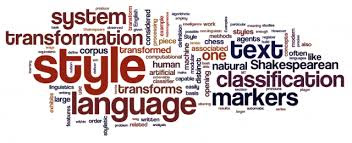- Get link
- X
- Other Apps
- Get link
- X
- Other Apps
Style and Importance of Style in Stylistics
Definition
of Style
Lucas
(1955) says style, it is the skilful use of words, particularly in
prose, whether to convey claims or evoke feelings. It makes use of the
ability to present information succinctly and clearly.
‘Style has also been described as the description and analysis of the various ways that linguistic elements take on different shapes when they are used. According to Aristotle, using words differently is the most efficient way to achieve clarity, diction, and a certain amount of dignity, according to Leech (1969).
The style for the Lawal (1997), is a component of language that deals with diction, phraseology, sentence structure, rhetorical devices, and other linguistic choices that are in keeping and complementary with the subject matter.
Definition
of Stylistics
Importance
of Style in Stylistics
Decoding stylistics focuses on all linguistic distinctions and potential applications (newspaper, colloquial style). Its goal is to link the communication situation and the message.
Encoding stylistics: The information (or message) is coded in terms of its shape, and the addressee serves as the decoder of the data inside the message. The issues with encoding stylistics have to do with the proper reception of the message without any losses (deformation).
From the very beginning of time, the style has been a subject of study. The style was seen by Aristotle, Cicero, and Demetrius as the appropriate embellishment of ideas. This point of view, which was prevalent during the Renaissance, allows for the classification of stylistic devices. The essayist or speaker is supposed to organize his ideas using sample sentences and "figures" that are appropriate for his style of discourse.
The difference between one author is based on the style. It would be impossible for any writer or work of literature to fully stand out if everyone adopted the same style. Although the style has a part in all genres of literature, fiction is the one where it is most frequently discussed. Because style is a crucial, defining characteristic for fiction writers, stories have been and will continue to be retold, but it is an author's style that can distinguish work and alter the reader's perspective of what literature is. Thus, it’s difficult to conceive what literature would be like without style.
Conclusion
Language and literature
are both studied scientifically in stylistics. It is connected to numerous
other scientific topics. Phonology, morphology, phonetics, syntax, and other
areas of study are all included in stylistics. Stylistics aids in a new and
improved understanding of the language. Similarly, we use stylistics every day
when we read sign boards.
For More Articles Check This...








Comments
Post a Comment